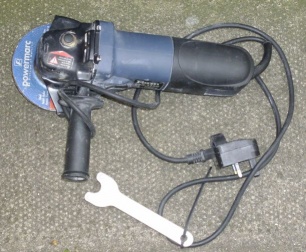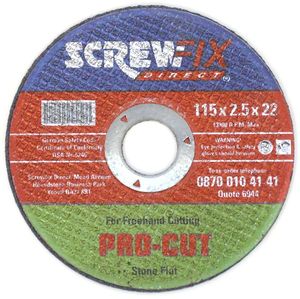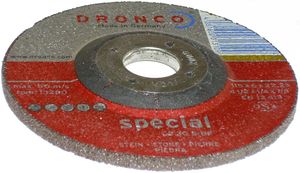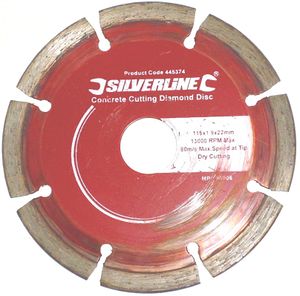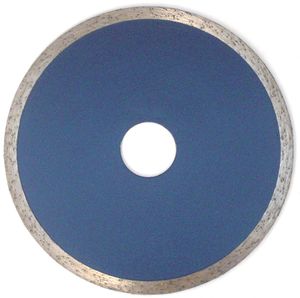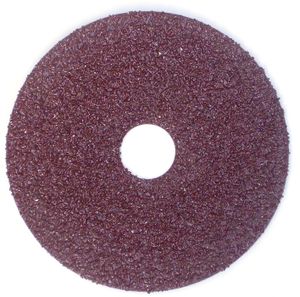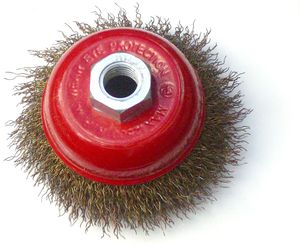Angle grinder
Angle grinders can cut, sand, polish, grind down, tool wood & metal.
Uses
Uk.d-i-yers have used angle grinders to:
- Grind off protruding lumps on a concrete floor
- cut chases in walls
- remove mortar from brick & block walls
- as a high speed metal sander
- remove paint
- strip off plaster (wirewheel)
- texture wood (wire wheel)
- remove obstinate lumps of muck
- cut metal goods up for disposal
- cut bolts & threaded rod
- cut heavy duty curtain rails
- remove the head of a stuck fastener
- rapid rivet removal
- remove rusted outdoor metal fixings
- remove rust
- smooth welds
- cutting metal tube
- sharpen a shovel for lino removal
- sharpen & regrind drill bits
- sharpen cutlery - very fast
- cut wood sheet where a saw could not acccess it
- as a wood cutting tool along with a drill lathe to produce turned goods
- remove old tile adhesive to make a flat level surface, with backing pad & coarse abrasive fibre disc.
- cut angle iron
Disc Types
Grit Discs
Common cheap discs used for stone & metal cutting & grinding. Cutting discs are thin (typically around 2.5mm), grinding discs are thick (around 6mm or so).
Diamond discs are recommended instead of grit, as performance is vastly superior. There are however occasional tasks where these grit discs can perform better.
- grinding HSS tool steel
- accessing tight spots using a small worn down grit disc
- cutting a 1/4" slot using a grinding disc
Main types of grit disc:
- Stone cutting
- Stone grinding
- Metal cutting
- Metal grinding
Other types:
- Stainless steel cutting
- Extra-thin (1mm)
- a bit brittle
- quicker cutting
- handy when youre up a ladder etc
- Aluminium & copper cutting
- this can be done with ordinary metal cutting discs too, if not as well
- See-through discs (large cutouts enable view of workpiece during use)
Diamond Discs
Diamond Discs give a huge performance improvement on grit discs for nearly all tasks, and are now affordable for everyone.
- Performance far superior to grit discs
- Even basic ones will outlast at least a couple of dozen grit discs
- Safer than grit discs, as a steel disc will not fly apart
Cutting Discs
- Standard thin blades for cutting.
- Available from a few pounds each
Diamond Grinding Discs
- Diamond grinding areas on one side of the disc
- Not cheap
- Available with 1 or 2 rings of abrasive
- Discs are heavier than other types
Flap wheels
Flap discs
- plastic backed are preferred to aluminium
- Don't catch the edges of the disk on the workpiece -
the disk shreds
- A lightweight 7" flap disc is more controllable in a 9" grinder
Tile Cutting Discs
These have no thermal expansion slots. If worked hard without cooling they will heat up and buckle.
TC Grinding Discs
Tungsten carbide discs are a cheaper equivalent to diamond discs, harder & safer than grit discs, but not as hard as diamond.
Fibre disc
These are a thin flexible fibre disc with abrasive resin bonded to one side of it. They need to be used with a backing pad.
This is the fastest stock removing sander, with linear speeds far in excess of other types of sander. This and the crescent shaped pressure area make them a poor choice for finish sanding.
For fastest stock removal, a fair amount of force can be put on the disc, so it bends as it goes round. However the discs don't last well used like this, they split and come apart after a while. Eye protection and gloves are essential.
Nylon mesh paint remover
- Open nylon mesh with embedded abrasive
Wire wheel
- Good for stripping paint etc off masonry & metal
- they quickly damage any surface that isn't very hard.
- Great for removing rust & paintwork, esp. tarry paints that clog abrasives.
- Some cheap ones shed bristles too much, some are fine.
The 3 main patterns of wire wheel are:
- cup brush - least effective
- wire wheel
- twisted wire wheel - most effective
Sanding discs
A 2 part arrangement:
- Flexible plastic backing pad
- Fibre sanding disc
With a very coarse disc, ie 20-40 grit, the result is a sander with the fastest stock removal of all sander types. But these are fairly useless as finishing sanders, as its difficult to avoid creating crescent shaped gouges in the workpiece.
- 3M's triangular sanding discs avoid the edge-crescent
problem.
Paint removers
Sponge pads
- Good performance, but they shred rapidly if you catch an edge.
- Handy for stripping aluminium or fibreglass without damaging the metal
- Expensive and quick-wearing for steel.
Beartex discs
- Good for taking paint off aluminium
- not cheap
Wood Discs
- Discs designed to carve wood
- Not popular
- all types have much more ability to eat flesh than grinding discs
- There is more than one type of wood cutting disc. Solid disc types (eg Arbortech) are unpopular for their damage potential, but are much better behaved than the evil flesh eating chainsaw types below.
- best to pick one that handles metal too, in case a nail is encountered
Chainsaw disc
- Circlet wood carving disc
- pic
- a lot of potential for injury, most diyers won't use them
Sizes
1"
- 1" - 1.5" abrasive dics are used on die grinders (aka dremel tools).
4"
- Sometimes seen
4.5"
- 115mm is the most commonly used size for diy
- Wide range of discs easily available for 4.5" grinders
- Cuts cant go very deep with a 115mm disc
- Generally use an M14 disc fixing
5"
- Used for wall chasers
9"
- Popular large size for cutting deeper.
- Gyroscopic effect affects controllability
- they run much slower than 4.5", and don't cut a lot faster
Quality
The advantages of a good quality angle grinder:
- longevity
- better protected against dust
- No-spanner nuts, with a hinge-out key for disk changing.
- Guards easy enough to adjust to the best position that this might actually be done
- Low-vibration side-handles (Metabo, and available as spares). Layers of neoprene pipe insulation (Armaflex) stuck to them makes a useful substitute/addition
Ancillaries
The first 2 are necessary. Don't be tempted to use a grinder without them.
Eye protection
- Truly essential.
- Goggles must be indirect vent to avoid eye injury
- Some people prefer a hinged faceshield, but these are less safe against red hot sparks.
Ear protection
- Necessary
- When worn with a faceshield you might need ears with a swivel band that you can put to the back, otherwise an integrated hat & earmuff.
- Ear defenders with radio are cheap nowadays. Good when grinding for hours at a stretch
Gloves
- Thin leather keeps flying bits off.
- Thick leather gives some vibration insulation too.
- Best of all though are gel anti-vibration gloves (Arco, twenty quid). If you're grinding steel for welding (i.e. for hours), then "fizzy fingers" is really something to be avoided afterwards.
Apron
- Aldi have leather welding aprons for cheap - less than I paid for the leather to make mine
- Essential with wire brushes, some stick you with porcupine quills otherwise
- When grinding, an apron keeps you cleaner and gives you something to kneel on
Dustmask
- You need something, especially with stone
- 3M 3000 / 4000 series are a good start
Dust reduction
- needed when grinding masonry
- makes the workspace a lot more human-friendly
- the better options can turn a filthy clean-up afterwards into a quick run over with the hoover
Several possible solutions:
- 12" Fan in window - not brilliant
- vacuum cleaner nozzle taped to grinder - works well, but adds a little weight to the grinder and restricts movement
- Ioniser - Makes concrete dust indoors fall out of suspension a lot quicker.
- Water spray can help some - be sure to use an RCD
- Wet floor also helps some
Tools
Budget grinders have a tool to undo the nut that holds discs on, but no easy means to remove wire brushes & flap wheels. The solution is to grind a spanner down in thickness so that it will fit and undo a wire brush.
Replacement spanners for removing discs are available if needed. Better than losing it is to cable tie it to the grinder's mains lead.
Safety
Angle grinders are one of the highest risk power tools, and users should know some basics to stay away from A&E.
Eye protection
Lots of people get eye injuries through using direct vent goggles. You need indirect vent.
Sparks
Angle grinding discs produce huge quantities of sparks, and good eye protection should always be worn. Direct vent goggles allow sparks to enter the eyes, indirect vent are needed.
Fools can be identified quickly on any site: people refusing protective eyewear when using an angle grinder are a risk to work with, and should be kept an eye on.
Sparks should be kept away from flammables, such as dry sawdust. Also avoid windscreen glass, into which the sparks can embed themselves leaving minor permanent damage to the glass surface. Sparks from metal cutting also stain concrete. Nothing is visible initially but as the sparks rust, staining appears.
Sparks must also be kept away from the eyes of passers by. Failure to do so can cause injury and/or result in legal problems and costs.
Control
An issue with angle grinders is their ability to go out of control, jump at you and bite off a lump of flesh. Forces on the grinder result from friction between disc and workpiece, which result either from pushing the tool too hard or not controlling its position accurately enough. In other words the best way to reduce risk is careful control of position, and not pushing it in a rush.
Control of position means always use 2 hands, don't overreach, and ensure a stable standing position, and don't let it wobble in use. It can be tempting to reach out for that last bit, but really its a mistake. These tools have 4.5" 11,000rpm cutter discs with little safety guarding, and you don't want to have a fight with one. You will lose. (Which bit you'll lose is anyone's guess.)
Don't push it. Push it a bit, the disc grabs the workpiece, and the direction it moves forces the machine hard into the workpiece, and the machine throws either itself, or a piece of masonry/metal, or disc fragments. Petrol driven machines behave much better in this respect, as they have a clutch, but electric grinders have nothing that will slip, plus the inertia of a kilowatt or so of high speed mains motor, so the throwing force is too high to control.
Keeping yourself out of the plane of the spinning disc reduces the risk of being bitten by kickback.
The Power-up Gotcha
If you plug it in and the switch on the grinder is on, it will spin, jump & bite.
Reducing risk:
- Check switch position before applying power
- Steel toecap boots
- A soft start grinder
Unidentified Flying Objects
Angle grinders generate unidentified flying objects at times, hence the need for eyewear. (The objects are often identified afterwards.)
Face should be kept out of the plane of the disc, as this is the direction in which flying objects and broken discs are launched.
To avoid UFOs, don't push the machine too hard. This is usually what causes them. Push it a bit, the disc grabs the workpiece, and the direction it moves forces the machine hard into the workpiece, and the machine throws either itself or a piece of masonry/metal.
Petrol driven machines behave much better in this respect, as they have a clutch, but electric grinders have nothing that will slip, plus the inertia of a kilowatt or so of high speed mains motor.
Grind vs Cut
Don't use cutting discs to grind. They aren't tough enough to take side loads and are made even thinner by the grinding process. If you grind off the abrasive side they may shatter and launch a fleet of sharp abrasive flying objects. If you grind off the mesh side they can break explosively and cause serious injury.
Speed ratings
All discs and other tools for angle grinders have a speed rating. This should not be exceeded in use. Exceeding speed ratings puts more force on the disc than it is designed to take. Discs coming apart at 11,000rpm is a known issue with grinders.
Especially stupid would be putting a 6,000rpm disc in an 11,000 rpm machine. Yet 6,000rpm discs are on sale and some people do put them in 11,000rpm machines.
Diamond discs are much safer than grit discs in this respect.
Wrong Discs
Never use bench grinder discs, or any other disc not designed for an angle grinder. These other discs lack the explosion control bonded fibre mesh that angle grinder discs have, and generally will not survive the high spin speed, resulting in explosive failure. People have died mucking about with the wrong kind of disc.
Grit damage
Diamond discs throw removed grit so fast it can be hard on skin. Tough gloves & arm coverings are recommended.
